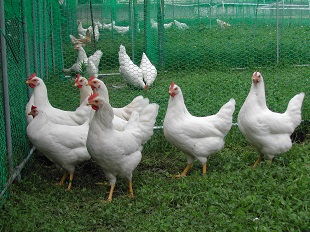Understanding and regulating of animal behaviour and emotion

Research members: Dr. Tsuyoshi Shimmura
Research fields: Animal life science, Genome science, Agro-engineering
Departments: Department of Agriculture
Keywords: Animal Behaviour, Animal Welfare, IoT, Animal Science, Animal Computer Interaction
Web site:
Summary
Through ensuring the comfort of animals, animal welfare is intended to improve productivity as well as to create safe, high-added-value animal products that can contribute to human health. Since the 21st century, animal welfare has become a global standard, and this change has resulted in an obvious frame shift in livestock management systems. While carrying out these basic and applied research studies in parallel, I learned a host of techniques for understanding the multiple layers behind animal behavior, from the ecological to the molecular. Most animals communicate using innate vocalization, which does not require learning. However, the control mechanism behind innate vocalization has yet to be elucidated in any organism.
I use the rooster’s crowing "cock-a-doodle-doo" as a model, and to date, I have found that the timing of crowing in roosters is controlled by a circadian clock and social rank. Also I have been uncovering the molecular mechanism on pattern and motivation of vocalization. My research initiative is aimed at understanding the vocal communications of animals by quantifying them automatically using technolgies and informatics. Then I intend to work on human regulation of the communications using sound stimilus. I also intend to work on the molecular mechanism of cannibalism and then on generating a chicken strain in which cannibalism is genetically regulated.
These experiments would bear fruit in the form of revolutionary management systems for controlling animal behavior, achieved by regulating genetic and environmental factors and their interaction (i.e. epigenetic factors). The achievements resulting from this research initiative could improve productivity both in quantitative and qualitative terms. It is my hope that my proposed research initiative will serve as a foundation for building a sustainable society wherein humans and animals can coexist.
Reference articles and patents
- Nakayama & Shimmura et al. Nature Ecology & Evolution 3, 845–852 (2019).
DOI: 10.1038/s41559-019-0866-6 - Shimmura et al. Scientific Reports 9, 3978 (2019).
DOI: 10.1038/s41598-019-40746-9 - Shimmura et al. Nature Communications 8, 412 (2017).
DOI: 10.1038/s41467-017-00432-8 - Shimmura et al. Scientific Reports 5, 11683 (2015).
DOI: 10.1038/srep11683 - Nakane & Shimmura et al. Current Biology 24, R596–R597 (2014).
DOI: 10.1016/j.cub.2014.05.038 - Shimmura & Yoshimura. Current Biology 23, R231-R233 (2013).
DOI: 10.1016/j.cub.2013.02.015
Contact
University Research Administration Center (URAC),
Tokyo University of Agriculture and Technology
urac[at]ml.tuat.ac.jp
(Please replace [at] with @.)
